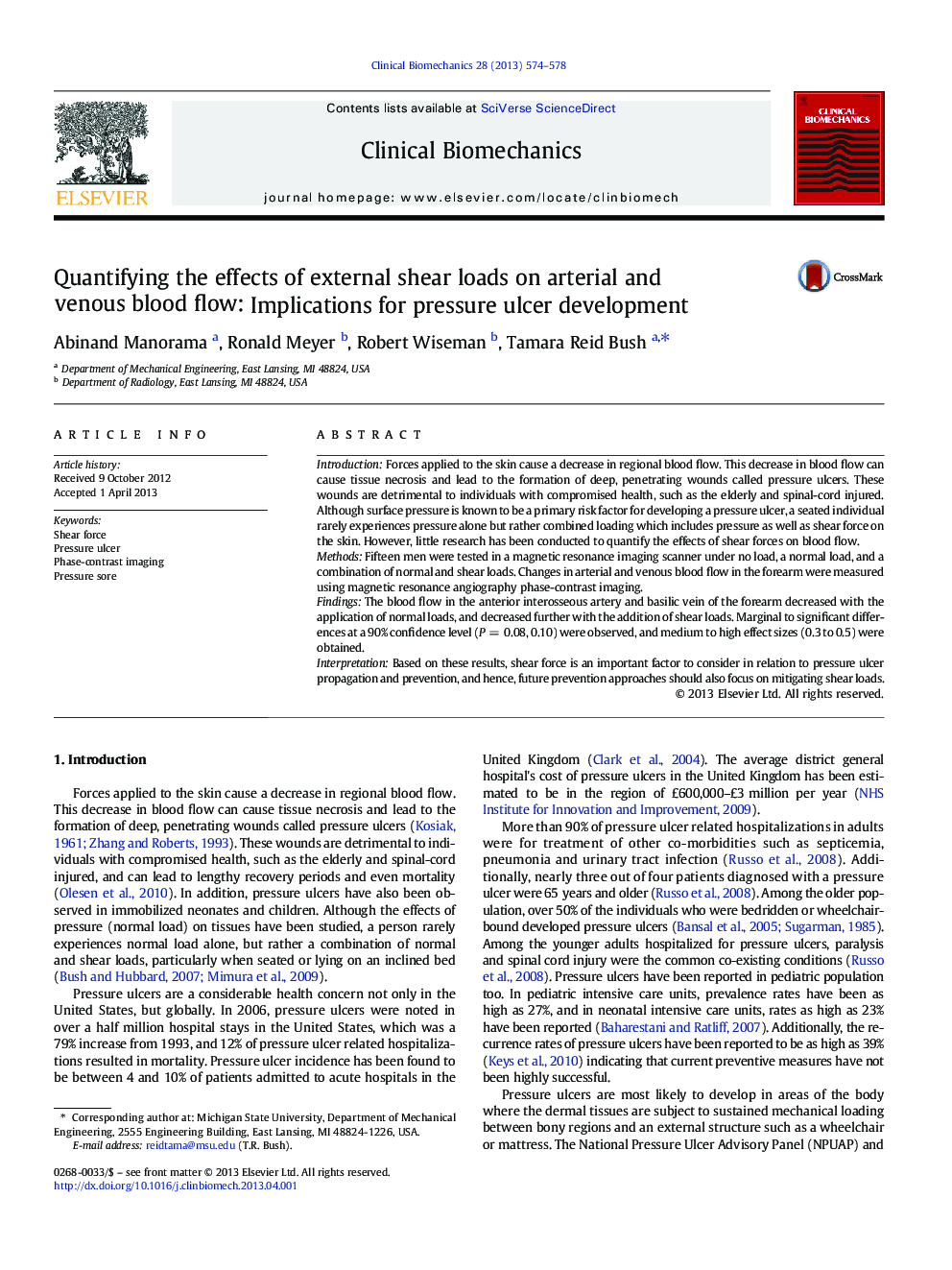| Article ID | Journal | Published Year | Pages | File Type |
|---|---|---|---|---|
| 4050707 | Clinical Biomechanics | 2013 | 5 Pages |
IntroductionForces applied to the skin cause a decrease in regional blood flow. This decrease in blood flow can cause tissue necrosis and lead to the formation of deep, penetrating wounds called pressure ulcers. These wounds are detrimental to individuals with compromised health, such as the elderly and spinal-cord injured. Although surface pressure is known to be a primary risk factor for developing a pressure ulcer, a seated individual rarely experiences pressure alone but rather combined loading which includes pressure as well as shear force on the skin. However, little research has been conducted to quantify the effects of shear forces on blood flow.MethodsFifteen men were tested in a magnetic resonance imaging scanner under no load, a normal load, and a combination of normal and shear loads. Changes in arterial and venous blood flow in the forearm were measured using magnetic resonance angiography phase-contrast imaging.FindingsThe blood flow in the anterior interosseous artery and basilic vein of the forearm decreased with the application of normal loads, and decreased further with the addition of shear loads. Marginal to significant differences at a 90% confidence level (P = 0.08, 0.10) were observed, and medium to high effect sizes (0.3 to 0.5) were obtained.InterpretationBased on these results, shear force is an important factor to consider in relation to pressure ulcer propagation and prevention, and hence, future prevention approaches should also focus on mitigating shear loads.
